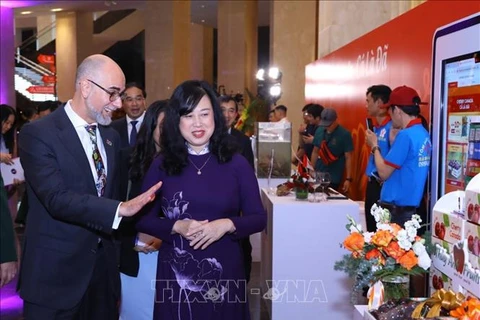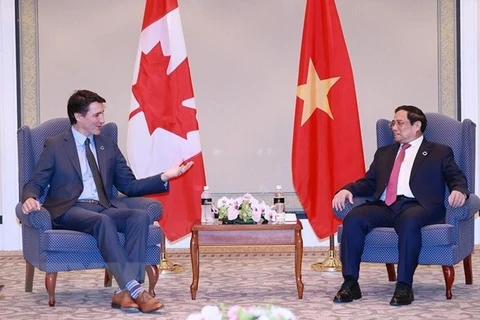Ottawa (VNA) – Two Vietnamese companies joined more than 200 other exhibitors at a fair called Apparel Textile Sourcing Canada 2023 held in Toronto from August 21-23.
Along with Viet Vuong and Vietnam Export Garments that had their own stalls at the fair, the Vietnam Trade Office in Canada introduced products produced by four others, namely Thai Son, May Hai, Tuong Long and Wisermax, at its booth.
Executive Director of the Canadian Apparel Federation Bob Kirke said that Vietnam's garment industry has many opportunities because its factories have long invested in implementing environmental measures and using energy efficiently. Therefore, their products have high competitiveness.
The Canadian garment and textile market is considered to have a very large consumption capacity, at up to 10 billion USD per year. However, Vietnam's exports to this market are still modest, even though the average annual growth has reached more than 40%.
Data from the Canada Border Services Agency showed that Vietnam's garment and textile export value reached about 1.8 billion USD in 2022, up 41.2% year-on-year. Vietnam has surpassed Bangladesh, a country with lower production costs, to become the second largest exporter of apparel and textiles to Canada, after China, with a market share of more than 12%.
Trade Counsellor at the Vietnamese Embassy Tran Thu Quynh said that with the trend of finding new partners of Canadian businesses, Vietnam is emerging as a country capable of supplying high-quality garments and textiles in large quantity.
Thanks to advantages of the Comprehensive and Progressive Agreement for Trans-Pacific Partnership (CPTPP), Canadian enterprises are very interested in the supply of goods from Vietnam. However, so far, the utilisation of this trade deal by Vietnamese firms remains low, she noted.
Currently, the Vietnam Trade Office in Canada is supporting Vietnamese companies by connecting and disseminating information about the Canadian market to help them make most of the principle of origin of the CPTPP in garment and textiles; and understand the change in Canadian thinking about apparel consumption as well as how to participate in the apparel textile sourcing fair in this country in the most effective way, she added./.
Along with Viet Vuong and Vietnam Export Garments that had their own stalls at the fair, the Vietnam Trade Office in Canada introduced products produced by four others, namely Thai Son, May Hai, Tuong Long and Wisermax, at its booth.
Executive Director of the Canadian Apparel Federation Bob Kirke said that Vietnam's garment industry has many opportunities because its factories have long invested in implementing environmental measures and using energy efficiently. Therefore, their products have high competitiveness.
The Canadian garment and textile market is considered to have a very large consumption capacity, at up to 10 billion USD per year. However, Vietnam's exports to this market are still modest, even though the average annual growth has reached more than 40%.
Data from the Canada Border Services Agency showed that Vietnam's garment and textile export value reached about 1.8 billion USD in 2022, up 41.2% year-on-year. Vietnam has surpassed Bangladesh, a country with lower production costs, to become the second largest exporter of apparel and textiles to Canada, after China, with a market share of more than 12%.
Trade Counsellor at the Vietnamese Embassy Tran Thu Quynh said that with the trend of finding new partners of Canadian businesses, Vietnam is emerging as a country capable of supplying high-quality garments and textiles in large quantity.
Thanks to advantages of the Comprehensive and Progressive Agreement for Trans-Pacific Partnership (CPTPP), Canadian enterprises are very interested in the supply of goods from Vietnam. However, so far, the utilisation of this trade deal by Vietnamese firms remains low, she noted.
Currently, the Vietnam Trade Office in Canada is supporting Vietnamese companies by connecting and disseminating information about the Canadian market to help them make most of the principle of origin of the CPTPP in garment and textiles; and understand the change in Canadian thinking about apparel consumption as well as how to participate in the apparel textile sourcing fair in this country in the most effective way, she added./.
VNA























